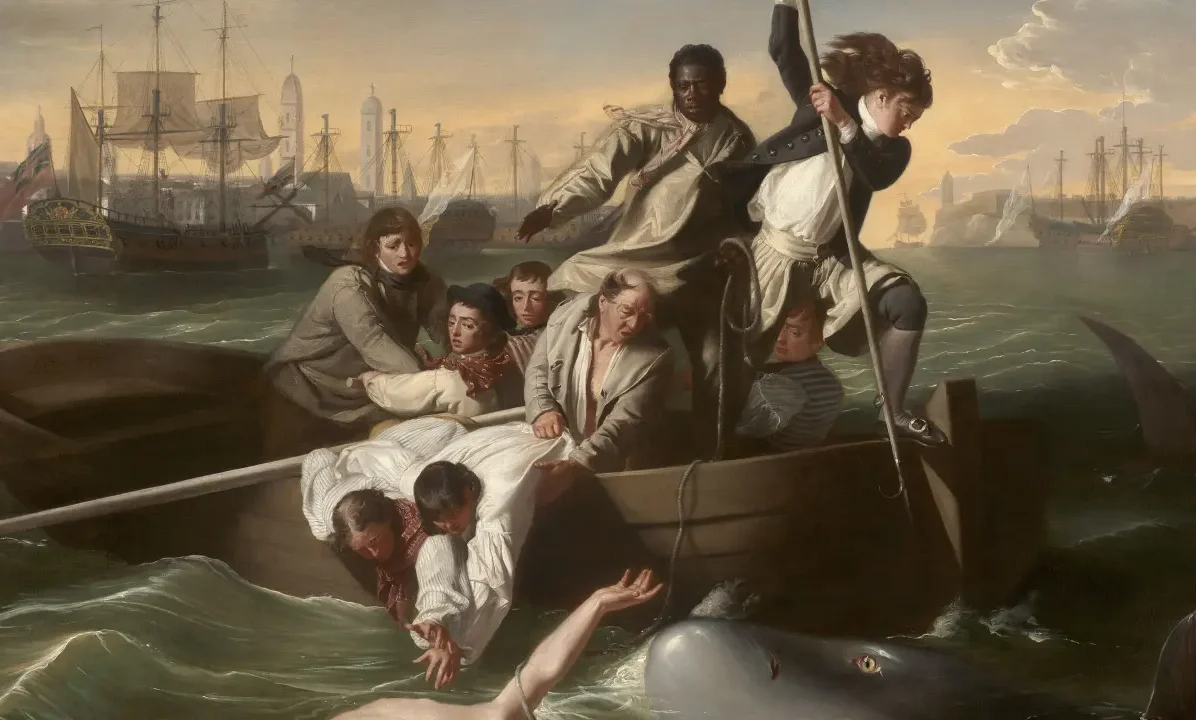Entangled Pasts, 1768 – now: Art, Colonialism and Change at the Royal Academy

In the annals of the Royal Academy’s storied 250-year history, it was not until nearly a quarter of a millennium had passed that the institution saw fit to bestow the title of Royal Academician upon a Black British artist. This milestone coincided with the Academy’s belated engagement in the broader discourse surrounding colonialism’s indelible mark on the arts, a discourse from which it had remained conspicuously absent.
Entangled Pasts, 1978 – now emerges as a watershed moment for the RA, confronting its imperial legacy through a brilliantly curated showcase that spans 250 years of art history, from Reynolds to Lubaina Himid. The exhibition ingeniously – and somewhat boldly – leverages the RA’s own archives to shed light on the complex cultural consequences of colonialism, delivering insight with an intellectual depth that reveals moments of unexpected beauty.
Curators Dorothy Price, Cora Gilroy-Ware and Esther Chadwick facilitate a profound conversation between the past and present, adopting the notion of “entanglement” both as an artistic concept and a curatorial approach, to reflect on the interplay of social, political and economic forces within a given period – this draws on Stuart Hall’s idea of “conjuncture”.
The exhibition makes a striking impression from the start, with a shadowy rotunda setting the stage for the display of 18th-century portraits. Featured is Ignatius Sancho, an emblematic figure of the era, whose many roles as an actor, writer and composer are eclipsed only by his historic achievement as the first African-descended man to exercise the right to vote in Britain. Captured by Thomas Gainsborough, Sancho appears as if caught mid-conversation, his words almost audible. The dignified stance of Francis Barber, painted by Joshua Reynolds, speaks volumes of his life beyond being Samuel Johnson’s servant. He is depicted as a valued companion, standing tall in the artist’s Leicester Square studio. This gallery, dedicated solely to Black subjects, is a historic gesture by the Royal Academy, a bold introduction to an exhibition that promises change.
The curatorial juxtaposition within the gallery, focused on the concept of “whiteness”, is striking in its directness. It spans a spectrum of imagery, from depictions of cotton fields toiled by the enslaved – some as young as six, akin to Frederick Douglass – to artworks like William Mulready’s The Toy Seller from 1863, which portrays a Black man casting a tired glance at a fretful young white child, who is too intimidated to return the gaze while in his mother’s hold.
A focal point of the exhibition is Hew Locke’s Armada, making its London debut, an impressive installation featuring a fleet of model ships that hang in the gallery’s centre. This array captures the essence of various historical voyages with models like La Santa María, the Mayflower, and the HMT Empire Windrush – all frozen mid-journey, bearing the insignia of bygone eras. Locke’s work possesses a profound, epic resonance, evoking the complex and dark narratives of humanity’s odyssey across the seas.
Another highlight is Lubaina Himid’s full-scale silhouettes of African captives, who were coerced into roles such as dog handlers, dancers, toymakers and potters upon their arrival in 18th-century Bristol, occupy two extensive galleries. Here, they exude an aura of jubilant yet sorrowful existence, their typically hidden descriptive tags now prominently displayed. These figures engage in a silent dialogue with other works throughout the exhibition and resonate with Tavares Strachan’s grand interpretation of The Last Supper, rendered in black and gold, in the Royal Academy’s courtyard. This retelling of the masterpiece features all roles filled by renowned figures in Black history.
This exhibition stands as a seminal exploration of the Royal Academy’s colonial legacy, masterfully curated to both acknowledge and challenge the institution’s past. Its impact extends beyond mere discomfort – it is a raw, striking, and crucial encounter. Importantly, it refuses to let the dialogue on colonialism linger silently upon the gallery’s panels. Instead, it empowers the artworks to convey their own compelling testimonies.
Constance Ayrton
Entangled Pasts, 1768 – now: Art, Colonialism and Change is at the Royal Academy from 3rd February until 28th April 2024. For further information visit the exhibition’s website here.


















Facebook
Twitter
Instagram
YouTube
RSS